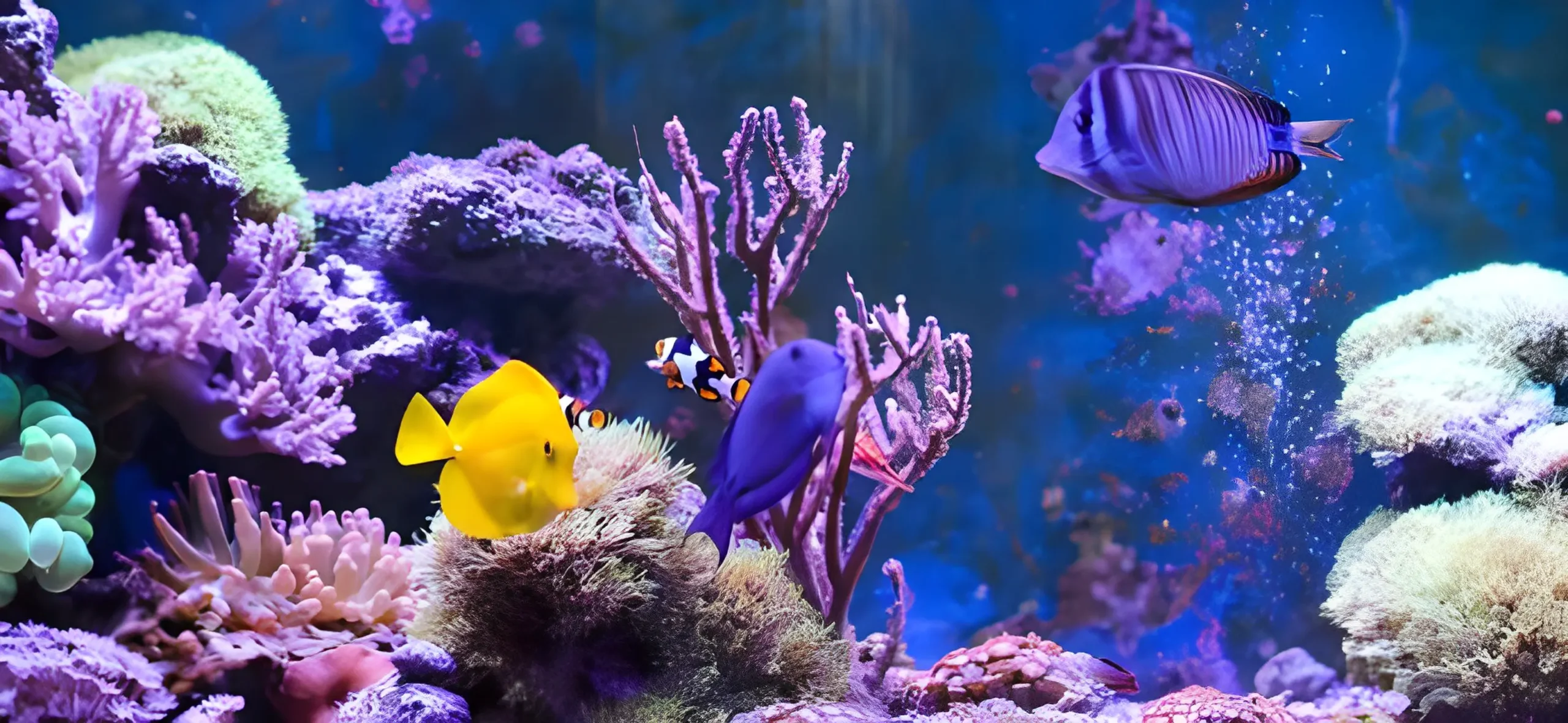Are you thinking about setting up a saltwater tank? Congratulations! A stunning underwater world awaits you. But before you can start introducing those beautiful marine creatures, there’s a crucial step you need to take: tank cycling. This process is essential for establishing a healthy and stable environment for your fish and other marine life.
In this step-by-step guide, we will walk you through the process of saltwater tank cycling, from the initial setup to the moment your tank is fully established. We’ll cover all the necessary steps, including choosing the right type of live rock, adding beneficial bacteria, and monitoring water parameters. By following this guide, you can ensure a thriving and balanced ecosystem for your saltwater tank.
Importance of Tank Cycling
Tank cycling is the process of establishing a stable and balanced ecosystem within your saltwater tank. It involves creating the ideal conditions for beneficial bacteria to grow and convert harmful substances into less toxic forms. This process is crucial because it helps prevent the buildup of ammonia and nitrite, which can be deadly to fish and other marine life.
During the cycling process, you will be introducing ammonia into the tank, which serves as a food source for the beneficial bacteria. As the bacteria break down the ammonia, it converts into nitrite, and eventually into nitrate, which is less harmful to marine life. This cycle, known as the nitrogen cycle, is essential for maintaining water quality and ensuring the health of your tank inhabitants.
Understanding the Nitrogen Cycle
Before diving into the steps of tank cycling, it’s important to understand the nitrogen cycle. The nitrogen cycle is a natural process that occurs in all aquariums, both freshwater and saltwater. It involves the conversion of toxic ammonia into less harmful compounds, ultimately maintaining a healthy environment for your fish.
The cycle begins with the introduction of ammonia into the tank, either through fish waste or a source like pure ammonia. Beneficial bacteria, known as nitrifying bacteria, then convert the ammonia into nitrite. Nitrite is also toxic to fish, but another group of bacteria, called nitrite-oxidizing bacteria, convert it into nitrate. Nitrate is the final product of the cycle and is relatively harmless to most fish and invertebrates, as long as it’s kept at low levels.
Step 1: Setting up the Tank
The first step in saltwater tank cycling is setting up the tank itself. Start by thoroughly cleaning the tank with freshwater, making sure to remove any debris or residue. Once clean, position the tank in a suitable location, away from direct sunlight and extreme temperature fluctuations.
Next, add a layer of substrate to the bottom of the tank. The substrate provides a natural environment for beneficial bacteria to colonize and helps create a stable ecosystem. Choose a substrate that is appropriate for saltwater tanks, such as aragonite sand or crushed coral. These substrates not only provide a habitat for bacteria but also help maintain stable pH levels.
After adding the substrate, it’s time to add live rock to the tank. Live rock is a key component of saltwater aquariums as it acts as a natural biological filter. It provides surface area for beneficial bacteria to grow and also serves as a habitat for various organisms. When selecting live rock, opt for fully cured or “live” rock that has been properly cleaned and cured to remove any unwanted pests or harmful substances.
Step 2: Adding the Substrate and Live Rock
Now that your tank is set up, it’s time to add the substrate and live rock. Carefully pour the chosen substrate into the tank, ensuring an even layer across the bottom. Aim for a depth of around 1-2 inches, depending on the type of substrate used.
Once the substrate is in place, carefully arrange the live rock within the tank. Consider creating caves, arches, or other structures to provide hiding places and territories for your marine life. Remember to leave enough space for easy access during cleaning and maintenance.
Adding the live rock will introduce beneficial bacteria into your tank, which will kickstart the nitrogen cycle. As the bacteria settle on the rock’s surface, they will begin to colonize and establish themselves, preparing your tank for the next steps of the cycling process.
Step 3: Introducing Ammonia
With the tank set up and live rock in place, it’s time to introduce ammonia into the system. There are a few ways to achieve this, depending on personal preference and availability. One option is to add a small amount of fish food to the tank. As the food decomposes, it releases ammonia into the water. Another option is to use pure ammonia, available at most hardware or pet stores. Follow the instructions on the bottle to determine the appropriate dosage for your tank size.
Introduce the ammonia slowly to avoid overwhelming the bacteria. Start with a small dosage and test the water regularly to monitor the ammonia levels. Aim for an ammonia concentration of around 2-4 parts per million (ppm). Be patient during this stage, as it can take several weeks for the ammonia to be converted into nitrite.
Step 4: Monitoring Water Parameters
During the cycling process, it’s crucial to monitor the water parameters regularly. This will help you track the progress of the nitrogen cycle and ensure that the conditions remain suitable for the beneficial bacteria. Test kits are available to measure ammonia, nitrite, nitrate, and other important parameters.
Test the water every few days and record the results. As the cycle progresses, you will notice a rise in ammonia levels, followed by an increase in nitrite. Eventually, the nitrite levels will start to decrease, indicating that the nitrite-oxidizing bacteria are establishing themselves. Finally, nitrate levels will begin to rise, signaling that the cycle is nearing completion.
Step 5: Introducing Beneficial Bacteria
To help expedite the cycling process and establish a healthy ecosystem, consider adding beneficial bacteria products to your tank. These products contain live bacteria cultures that can help jumpstart the nitrogen cycle and promote the growth of beneficial bacteria. Follow the manufacturer’s instructions to determine the appropriate dosage for your tank size.
Beneficial bacteria products can be added alongside the ammonia source or at any point during the cycling process. They provide a natural boost to the bacterial colonies, helping to establish a stable and efficient nitrogen cycle more quickly.
Know more about beneficial bacteria In your aquarium
Step 6: Testing and Adjusting Water Parameters
As the cycling process progresses, continue monitoring the water parameters and adjusting as needed. Nitrite levels should eventually drop to zero, indicating that the nitrite-oxidizing bacteria are thriving. Nitrate levels will rise, and it’s important to keep them in check. Regular water changes, around 10-20% every week, will help maintain stable nitrate levels and ensure a healthy environment for your marine life.
Maintaining stable water parameters is essential for the long-term health of your saltwater tank. Regular testing, water changes, and proper maintenance will help keep ammonia, nitrite, and nitrate levels in check, promoting a thriving and balanced ecosystem.
Conclusion and Maintaining a Healthy Tank
Congratulations! You have successfully cycled your saltwater tank and created a healthy environment for your marine companions. However, the journey doesn’t end here. It’s important to continue monitoring the water parameters, performing regular maintenance, and providing the necessary care for your tank inhabitants.
Remember to feed your fish and other marine life a balanced diet, provide proper lighting and filtration, and maintain a regular cleaning schedule. Regular water changes and testing will help prevent the accumulation of harmful substances and ensure the continued health and vitality of your saltwater tank.
By following this step-by-step guide and giving your tank the attention it deserves, you can enjoy the beauty and wonder of a thriving saltwater ecosystem. So dive in and start creating the perfect home for your marine companions. Happy fishkeeping!


1 thought on “Saltwater Tank Cycling: A Step-by-Step Guide”